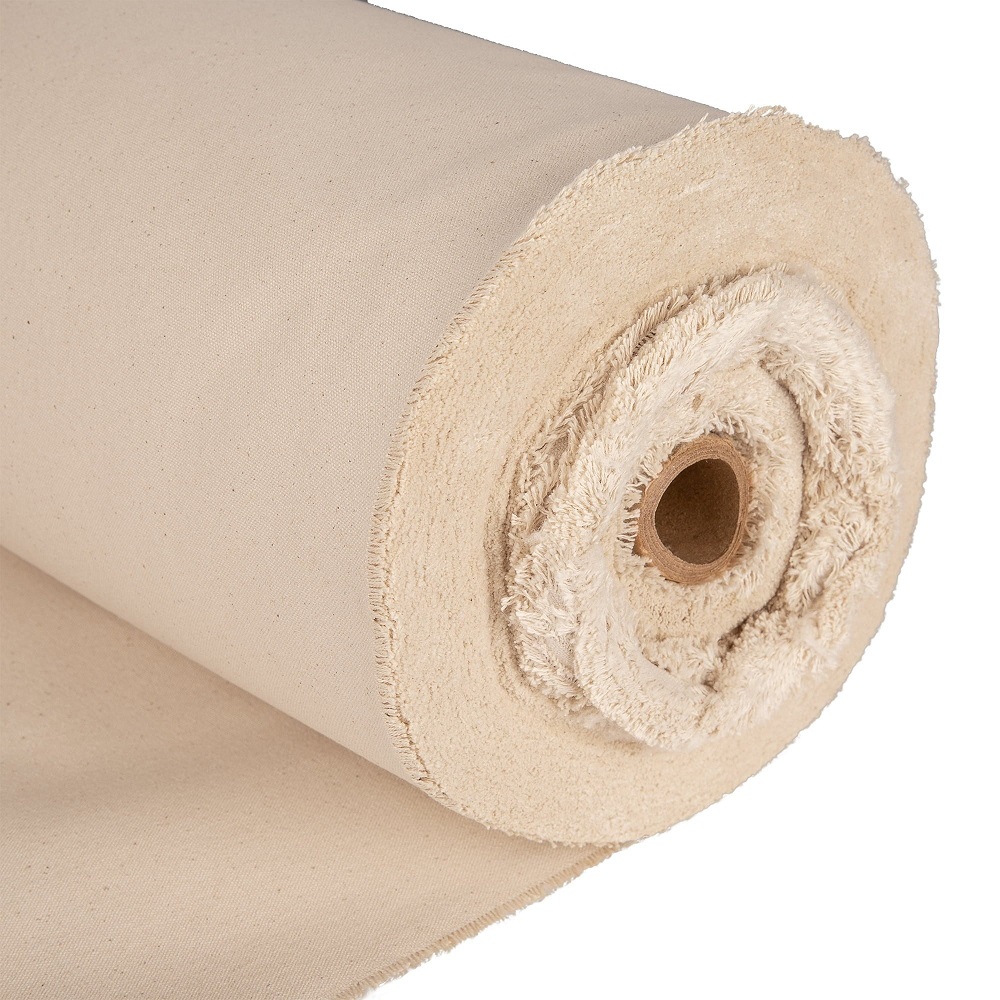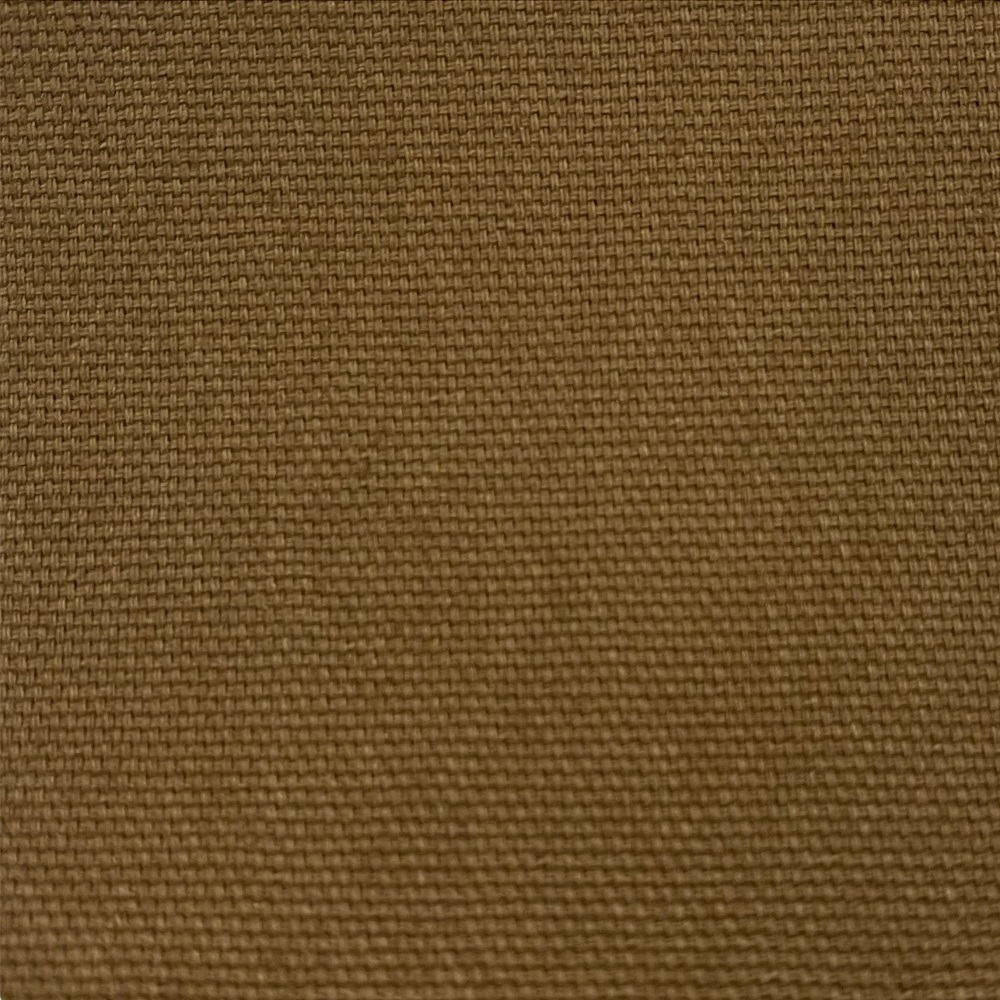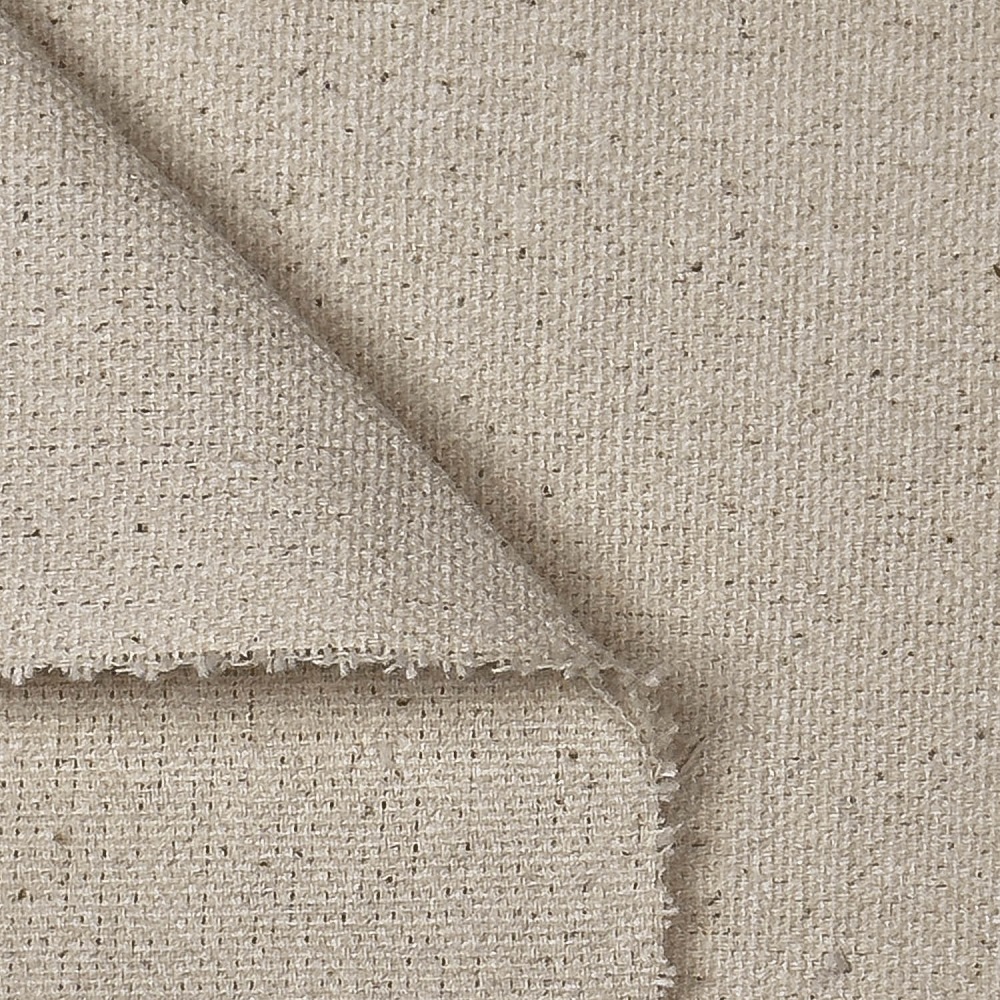Introduction to Cotton Duck Fabric
Cotton duck fabric is known for its durability and versatility. This woven, heavyweight cotton has a plain, tight weave. It imparts strength and resistance to wear and tear. This fabric is popular for its sturdy texture yet comfortable feel. Workers often use it for their gear due to its protective qualities. It’s also a favorite for outdoor applications like tents and awnings. Artists appreciate cotton duck fabric for canvas art, enabling fine art creations. Home decor is another area where it shines, from slipcovers to upholstery projects. Understanding cotton duck fabric will help you choose the best type for your needs. It will blend well with various project demands. Whether a novice or a seasoned tailor, cotton duck fabric is an essential material to know.
Defining the Various Weights of Cotton Duck
Cotton duck fabric comes in various weights. The weight, measured in ounces per square yard, indicates the fabric’s thickness and heaviness. Lighter weights, like the 7-ounce variety, are more flexible. They work well for apparel and lightweight drapes. Mid-weight ranges from 8 to 10 ounces are suited for slipcovers and light upholstery. Heavyweight duck, typically between 12 to 20 ounces, is ideal for tool bags and work gear.
Understanding fabric weights is crucial for selecting the right cotton duck. Each project demands a specific weight for optimal durability and functionality. For instance, a lighter weight might be perfect for a summer jacket. But you would need a heavier weight for a durable work apron.
The numbers assigned to cotton duck fabrics, from 1 to 12, help identify weight. Number 1 is the heaviest and number 12 is the lightest. Look out for these numbers when shopping to ensure you pick the right weight for your needs.
Selecting the correct weight of cotton duck can impact the fabric’s performance. Keep this in mind when working on your next project for best results.

The Versatility of Cotton Duck Fabric in Applications
Cotton duck fabric stands out in various applications. Its strength and durability make it a preferred choice for challenging environments. For outdoor use, cotton duck excels in creating protective gear. It builds resilient tents, tarps, and awnings that withstand the elements. On job sites, workers reach for cotton duck when they need reliable tool bags and rugged aprons.
Artists favor this fabric for its smooth surface, ideal for painting. They rely on its texture for canvas works that last. In home decor, the fabric’s adaptability shines through again. It is a popular pick for upholstery, slipcovers, and accent pieces that endure daily use.
Cotton duck fabric blends into the fashion world too. Designers use lighter weights to craft trendy jackets and durable bags. Each application benefits from the cotton duck’s unique properties. These include resistance to wear and adaptability to various needs.
Home crafters and professional tailors can get creative with cotton duck. Its uses range from personal projects to commercial products. This fabric supports innovation with its multitude of applications.
Whether for practical purposes or artistic ventures, cotton duck fabric lays a strong foundation. Its versatility ensures that each project stands the test of time. Keep cotton duck in mind for your next endeavor. It promises performance and endurance in a wide array of applications.
Important Factors to Consider When Choosing Cotton Duck
When selecting cotton duck fabric, a few key factors need attention to ensure you get the right material for your project. Here are the vital considerations:
Fabric Weight
Fabric weight is a top priority when choosing cotton duck. Recall, lighter weights are best for clothing and delicate items, while heavier weights suit industrial uses. Make sure the weight matches your project’s demands for durability and flexibility.
Fabric Weave
Cotton duck comes in different weaves. A tighter weave offers more strength and is great for outdoor gear. A looser weave can be better for items requiring more breathability.
Color and Dye
Consider if you need your fabric in a specific color or if it will need dyeing. Some cotton duck fabrics hold dye better than others, which is important for maintaining colorfastness over time.
Fabric Finish
Some cotton duck is treated with water repellents or other finishes. Decide if your project needs added protection against weather or stains. These finishes can extend the life of your product.
Size and Width
Cotton duck comes in various widths. Wider fabrics are good for large projects like furniture upholstery. Make sure to buy enough fabric to avoid seams where you don’t want them.
Price
Price is always a consideration. Higher quality often comes with a higher price tag, but investing in good material can save money in the long run by reducing wear and tear.
By considering these factors, you can choose the right cotton duck fabric with confidence. Ensure you opt for a fabric that complements your project’s function and style. With these tips in mind, your cotton duck selection will lead to successful and lasting creations.

Comparing Cotton Duck Fabric with Other Natural Fabrics
When we look at cotton duck fabric in comparison with other natural fabrics, several distinctions stand out. Each type has unique properties that serve different purposes.
Strength and Durability
Cotton duck is renowned for its strength and durability. Other natural fabrics like linen also offer durability but with a lighter weight and a different texture. Cotton duck’s tight weave contributes to its robustness, making it suitable for heavy-duty applications where other fabrics might not hold up as well.
Breathability and Comfort
While cotton duck is quite dense, other fabrics like cotton muslin and silk offer higher breathability. If your project prioritizes comfort and airflow, such as clothing for warmer climates, lighter natural fabrics may be preferred over cotton duck.
Water Resistance
Some natural fabrics, like wool, have inherent water-resistant properties. Cotton duck, however, often receives treatments to enhance its water resistance. This is particularly beneficial for outdoor applications like tarps and boat covers.
Aesthetic and Texture
Aesthetics also play a role in fabric choice. Linen has a distinct look and feel that many find appealing for home decor. Cotton duck offers a more utilitarian appearance, which can be both an advantage and disadvantage depending on the project.
Environmental Impact
Natural fabrics are generally considered eco-friendly, but their impact can vary. Organic cotton duck, for instance, has a lower environmental footprint than conventional cotton varieties. Other natural fibers, like bamboo, are praised for their sustainability due to rapid renewability.
By understanding how cotton duck fabric compares to other natural fabrics, one can make informed decisions that align with project requirements and personal preferences.
Care and Maintenance of Cotton Duck Fabrics
Cotton duck fabric is low-maintenance but needs proper care to last. Here’s how to maintain it:
Washing and Cleaning
Cotton duck can withstand washing. Use cold water and a gentle cycle to prevent shrinking. Avoid bleach that can weaken the fabric. For spot cleaning, use mild soap and a soft brush.
Drying
After washing, hang it to dry. Avoid using a dryer which can cause shrinkage. If needed, use tumble dry on low heat.
Ironing
Ironing cotton duck is safe on a medium setting. Use steam to remove wrinkles and give a crisp finish.
Storage
Store cotton duck in a cool, dry place. Keep it away from direct sunlight to prevent fading. Fold it neatly or roll it to avoid creases.
Treating Stains
Act quickly on stains. Blot the affected area. Then gently clean with soap and rinse. Do this before washing the whole fabric.
Maintaining cotton duck fabric ensures its durability and aesthetic. Treat it right, and it will serve well for many years.

Best Practices for Sewing with Cotton Duck
Sewing with cotton duck fabric can be a rewarding experience if done correctly. To ensure the best results, here are some best practices you should follow:
Choose the Right Needle
Select a heavy-duty needle, such as a denim or canvas needle, to handle the thickness of cotton duck. A larger needle, like a size 16 or 18, will make the job easier.
Opt for Strong Thread
Use a strong thread like upholstery or heavyweight cotton thread. This will prevent your stitches from breaking under stress.
Adjust the Stitch Length
Set your sewing machine to a longer stitch length. Short stitches can weaken the fabric due to the increased number of holes.
Pre-Wash the Fabric
Always pre-wash cotton duck to prevent shrinkage after your project is complete. This also removes any residual sizing from the fabric.
Iron Before Cutting
Press the fabric with an iron to get rid of wrinkles. It ensures precise cutting and fitting of the patterns.
Reinforce Seams
Cotton duck needs sturdy seams. Consider double-stitching or using a flat-felled seam for extra strength.
Be Mindful of Fraying
Since cotton duck can fray, finish the edges. Use a zigzag stitch or a serger to seal them.
Test on Scraps
Practice your techniques on scrap pieces first. This helps you adjust tension and stitch length without ruining the main fabric.
Go Slow
Sew slowly to maintain control. Cotton duck is heavy and can be tough to maneuver.
Keep Your Machine Clean
Cotton duck can produce more lint. Clean your machine regularly to prevent build-up and maintain performance.
By keeping these tips in mind, you’ll be well on your way to creating high-quality items with cotton duck fabric that are as durable as they are beautiful. Do not rush the process, and always remember that preparation is key when working with such a robust material.
Where to Buy Quality Cotton Duck Fabric
When looking for quality cotton duck fabric, knowing where to shop is key. Start by exploring local fabric stores. Staff there can offer advice and show you options. Also, check out specialty outlets that focus on canvas or outdoor materials. They often stock high-weight cotton duck suitable for tough jobs.
Online fabric stores are a convenient alternative. They provide a broad range, from light to heavy cotton duck. Look for retailers with good customer reviews to ensure quality. Remember to request samples. It lets you feel the fabric and test it for your project before buying it in bulk.
Wholesalers can be a good choice if you need large quantities. They typically offer better prices but may require a minimum purchase. Ask about discounts on bulk orders to save money.
Finally, consider eco-friendly and ethical suppliers for organic cotton duck fabric. They might charge more, but you’ll support sustainable practices. This is crucial if you’re mindful of your environmental impact.
No matter where you shop, check the fabric weight, weave, color, and finish. This ensures the cotton duck fabric meets your project’s demands. By choosing the right supplier, you’ll get material that performs well and lasts long.
